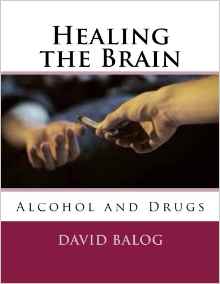
Use of illicit* drugs or misuse of prescription drugs can make driving a car unsafe—just like driving after drinking alcohol. Drugged driving puts the driver, passengers, and others who share the road at risk.
Why is drugged driving dangerous? The effects of specific drugs differ depending on how they act in the brain. For example, marijuana can slow reaction time, impair judgment of time and distance, and decrease coordination. Drivers who have used cocaine or methamphetamine can be aggressive and reckless when driving. Certain kinds of sedatives, called benzodiazepines, can cause dizziness and drowsiness.
 |
| Get the facts on drugs and the brain. |
All of these impairments can lead to vehicle crashes. Research studies have shown negative effects of marijuana on drivers, including an increase in crashes. Which drugs are linked to drugged driving? After alcohol, marijuana is the drug most often found in the blood of drivers involved in crashes.
Tests for detecting marijuana in drivers measure the level of delta9 tetrahydrocannabinol (THC), marijuana’s mindaltering ingredient, in the blood. But the role that marijuana plays in crashes is often unclear. THC can be detected in body fluids for days or even weeks after use, and it is often combined with alcohol. The risk associated with marijuana in combination with alcohol, cocaine, or benzodiazepines appears to be greater than that for either drug by itself.
Several studies have shown that drivers with THC in their blood were roughly twice as likely to be responsible for a deadly crash or be killed than drivers who hadn't used drugs or alcohol. However, a large NHTSA study found no significant increased crash risk traceable to marijuana after controlling for drivers’ age, gender, race, and presence of alcohol. More research is needed.
Along with marijuana, prescription drugs are also commonly linked to drugged driving crashes. A 2010 nationwide study of deadly crashes found that about 47 percent of drivers who tested positive for drugs had used a prescription drug, compared to 37 percent of those had used marijuana and about 10 percent of those who had used cocaine. The most common prescription drugs found were pain relievers. However, the study didn't distinguish between medicallysupervised and illicit use of the prescription drugs.
How often does drugged driving cause crashes? It's hard to measure how many crashes are caused by drugged driving. This is because: a good roadside test for drug levels in the body doesn't yet exist police don't usually test for drugs if drivers have reached an illegal blood alcohol level because there's already enough evidence for a DUI charge many drivers who cause crashes are found to have both drugs and alcohol or more than one drug in their system, making it hard to know which substance had the greater effect.
One NHTSA study found that in 2009, 18 percent of drivers killed in a crash tested positive for at least one drug. A 2010 study showed that 11 percent of deadly crashes involved a drugged driver.
Why is drugged driving a problem in teens and young adults? Teen drivers are less experienced and are more likely than older drivers to underestimate or not recognize dangerous situations. They are also more likely to speed and allow less distance between vehicles. When lack of driving experience is combined with drug use, the results can be tragic. Car crashes are the leading cause of death among young people aged 16 to 19 years.
A 2011 survey of middle and high school students showed that, in the 2 weeks before the survey, 12 percent of high school seniors had driven after using marijuana, compared to around 10. Drugged Driving in Older Adults In 2010, more than onequarter of drugged drivers in deadly crashes were aged 50 years or older. Illicit drug use in adults aged 50 to 59 has increased, more than doubling from 3 percent in 2002 to 7 percent in 2010. Mental decline in older adults can lead to taking a prescription drug more or less often than they should or in the wrong amount. Older adults also may not break down the drug in their system as quickly as younger people. These factors can lead to unintended intoxication while behind the wheel of a car.
A study of college students with access to a car found that 1 in 6 had driven under the influence of a drug other than alcohol at least once in the past year. Marijuana was the most common drug used, followed by cocaine and prescription pain relievers. What steps can people take to prevent drugged driving? Because drugged driving puts people at a higher risk for crashes, public health experts urge people who use drugs and alcohol to develop social strategies to prevent them from getting behind the wheel of a car while impaired. Steps people can take include: offering to be a designated driver appointing a designated driver to take all car keys getting a ride to and from parties where there are drugs and alcohol discussing the risks of drugged driving with friends in advance
In 2014, 10 million people aged 12 or older reported driving under the influence of illicit drugs in the past year. It's hard to measure how many crashes drugged driving causes. After alcohol, marijuana is the drug most often linked to drugged driving. In 2010, more than onequarter of drugged drivers in fatal crashes were aged 50 years or older. When lack of driving experience is combined with drug use, the results can be tragic. People who use drugs and alcohol should develop social strategies to prevent them from getting behind the wheel of a car while impaired.
Source: National Institute on Drug Abuse.









